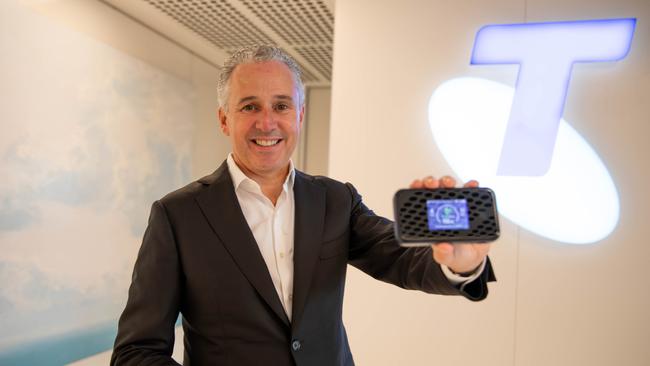Telstra defends NBN bar as 5G testing ramps up
Telstra says there’s nothing Machiavellian about its decision to stop selling high speed NBN internet as testing of its own supercharged 5G ramps up.

Telstra is happy to lose NBN customers rather than offer them an inferior high speed service, according to CEO Andrew Penn, who added that the $51 billion network isn’t geared up for delivering high speed broadband reliably.
Having stopped selling the 100 megabits per second (Mbps) NBN plans to homes connected to the network via fibre-to-the-node (FTTN), fibre-to-the-curb (FTTC) and fibre-to-the-basement (FTTB) technologies, Mr Penn said on Thursday that trying deliver high speeds over large portions of the network were not worth the trouble.
“By far the majority of those (NBN) lines are not capable of providing that speed and NBN Co is not capable of providing that information to us before we sign up a customer.”
“Customers think they will get 100mbps but we then test it and find out that in majority of cases we can’t offer it to them.”
With 6.6 million premises connected to the NBN, about 11 per cent of these are on 100mbps plans. Telstra currently has close to 3 million NBN customers with majority of them on the 50Mbps plan.
Telstra temporary halt will put pressure on NBN Co hitting its average revenue per user (ARPU) target of $45, however, Mr Penn said the poor experience delivered to its customers had forced the telco’s hand.
“There’s nothing Machiavellian here, this is purely about customer experience.”
Mr Penn’s comments came as Telstra announced plans on Thursday to let its 5G customers start testing millimetre wave (mmWave) spectrum by mid-year, through a 5G-enabled hotspot, dubbed the Telstra 5G Wi-Fi Pro.
Telstra currently has 100,000 5G customers and Mr Penn said internal testing of the technology had already begun, with work underway to roll out trial mobile sites in selected areas ahead of the impending auction of mmWave spectrum in 2021.
The Australian Competition and Consumer Commission (ACCC) is currently mulling limits on how much of the precious spectrum telcos will be allowed to buy in the upcoming spectrum auction.
The mmWave spectrum is particularly useful in rolling out fixed wireless services that can compete with the NBN.
the first mmWave band to be used for mobile services in Australia will be in the 26 GHz band.
While the extremely high frequency spectrum can be used to deliver lightning speeds, it’s susceptible to interference and cannot travel long distances. Delivering efficient 5G services, especially fixed wireless services, will require the telcos to roll out denser networks of small cells and bring the equipment much closer to homes.
The tests could be the first step in Telstra’s plan to potentially bypass the NBN completely, with the telco recently warning that it was making almost no money reselling fixed NBN services because of high wholesale prices charged by NBN Co.
Optus already has a fixed wireless product in the market and Telstra could use the mmWave spectrum to selectively target high value customers and offer them high speed broadband services completely independent of the NBN.
Mr Penn said the capabilities offered by 5G technology open the doors to a number of commercial models for Telstra to explore.
“There are things like network splicing and dynamic spectrum sharing that allow us to provide a specific quality of service for different use cases, whether they are retail or enterprise customers.”
“So we see multiple commercial models (for 5G),” he said.



To join the conversation, please log in. Don't have an account? Register
Join the conversation, you are commenting as Logout